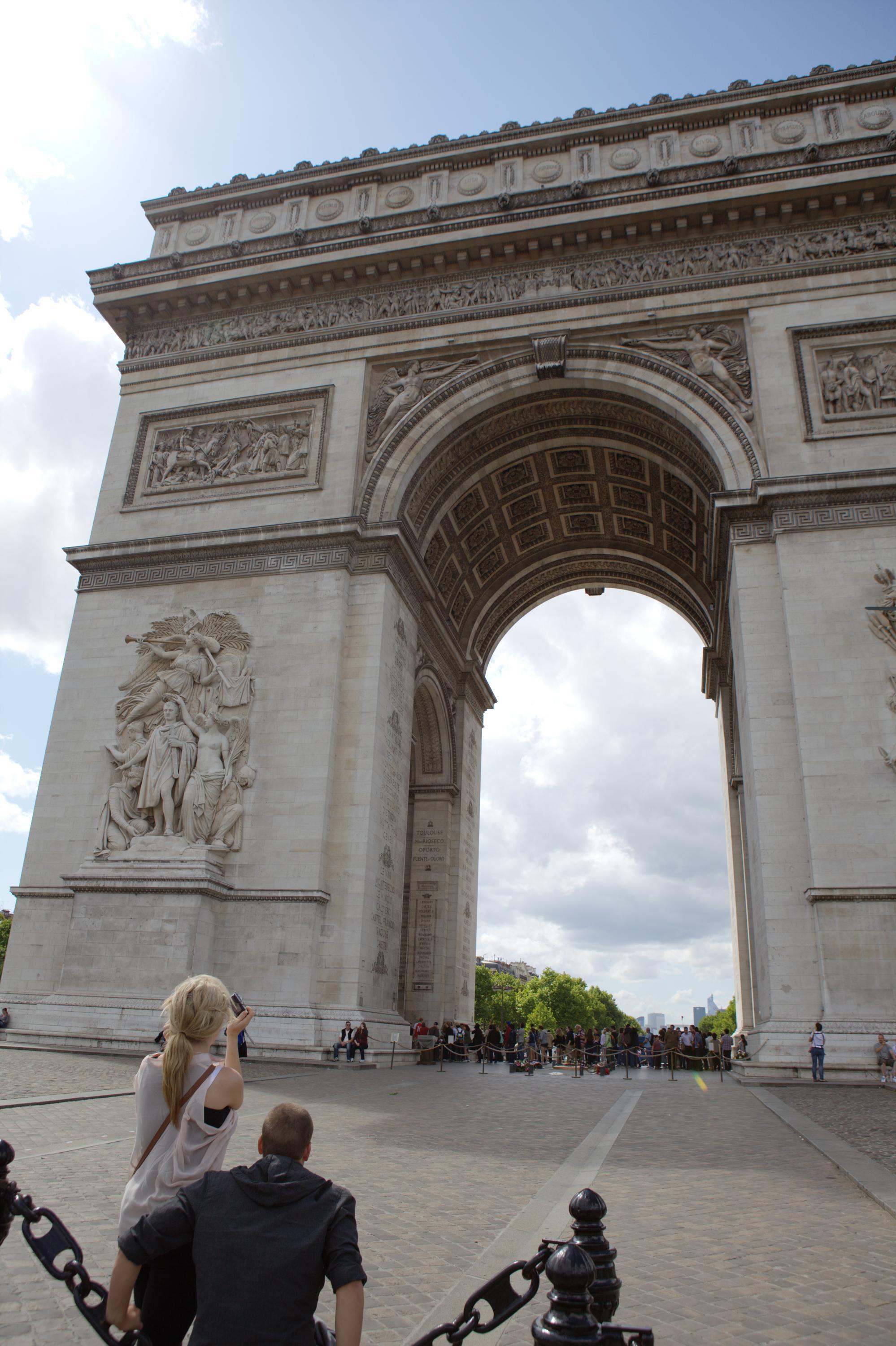If there is one monument that symbolizes “La Gloire,” or the glory of France, it is this giant triumphal arch. Crowning the Champs-Élysées, this mighty archway both celebrates the military victories of the French army and memorializes the sacrifices of its soldiers. Over time, it has become an icon of the Republic and a setting for some of its most emotional moments: the laying in state of the coffin of Victor Hugo in 1885, the burial in 1921 of the ashes of an unknown soldier who fought in World War I, and General de Gaulle’s pregnant pause under the arch before striding down the Champs-Élysées before the cheering crowds after the Liberation in 1944.
It took a certain amount of chutzpah to come up with the idea to build such a shrine, and sure enough, it was Napoleon who instigated it. In 1806, still glowing after his stunning victory at Austerlitz, the Emperor decided to erect a monument to the Imperial Army, along the lines of a Roman triumphal arch. The architect chosen was Jean-François Chalgrin, who drew inspiration from Rome’s Arch of Titus, though he abandoned the columns and made Napoleon’s arch a whopping 50m (163 ft.) high and 45m (147 ft.) wide, the largest of its type on the planet. Unfortunately, the defeat at Waterloo put an end to the Empire before the arch was finished and construction came to an abrupt halt. It wasn’t until 1823 that building got going again; it was finally finished in 1836 by Louis-Philippe.
The arch is covered with bas-reliefs and sculptures, the most famous of which is the enormous Depart of the Volunteers of 1792, better known as the Marseillaise, by François Rude, showing winged, female Liberty leading the charge of Revolutionary soldiers. Just above is one of the many smaller panels detailing Napoleonic battles—in this case, Aboukir—wherein the emperor trods victoriously over the Ottomans. At the base of the arch is the Tomb of the Unknown Soldier, over which a flame is relit every evening at 6:30pm. The inscription, added after WWI, reads ICI REPOSE UN SOLDAT FRANÇAIS MORT POUR LA PATRIE, 1914–1918 (“Here lies a French soldier who died for his country”).
Don’t even think about crossing the traffic circle; instead take the underpass near the Champs-Élysées Métro entrance. You can visit the area under the arch free of charge, but if you want to enjoy the view from the rooftop terrace, you have to pay. You also have to climb 284 stairs to get there (only the very young, the very old, and those with disabilities get to use the elevator). Though you are not as high up as the viewing platforms on the Eiffel Tower, the panorama is quite impressive. Directly below, 12 boulevards radiate from the star-shaped intersection (hence the moniker “Etoile”), and out front is the long sweep of the Champs-Élysées, ending at the obelisk of the Place de la Concorde, behind which lurks the Louvre. You can pick out many of the most famous monuments, including Sacré-Coeur and the Eiffel Tower; to the west are the skyscrapers of La Défense, including the huge, hollowed-out Grande Arche, a modern version of the one you are standing on. The viewing terrace is closed in bad weather.






 About our rating system
About our rating system


